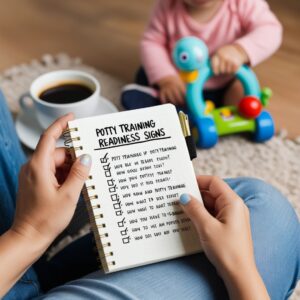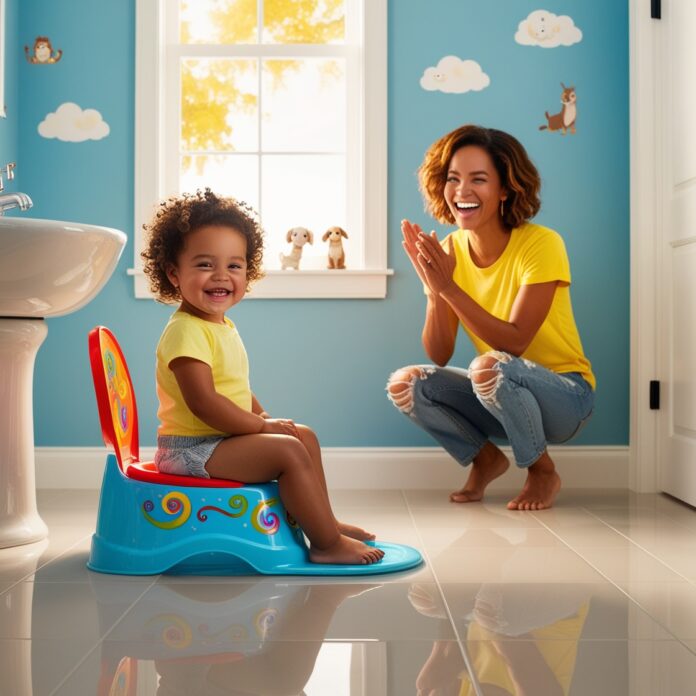Potty training is a major accomplishment in a child’s life and a crowning achievement of parents. On the other hand, when done without preparing your child, it will automatically raise much stress and frustration. But the good thing is, potty training isn’t a war. With proper strategies, coupled with patience and understanding, it will be easy to help a child through this transition. In this stress-free guide, we’ll explore practical tips, signs of readiness, and strategies to make potty training a positive experience for everyone.
1. When to Start Potty Training
During the potty training process, time is of the essence. Starting too early can lead to frustration, while waiting for the right moment can make the process smoother.
Signs Your Child is Ready
- Expressing curiosity about the restroom or watching others use it.
- Staying dry for periods of at least couple hours of the day.
- Showing the need to go through verbalization or body language
- Discontent with a dirty diaper and desiring changes
Age Guidelines
Every child is different and most children will be ready at some point between 18-30 months. Remember your child’s progression is unique and it’s very unhelpful to compare to other children.

2. Getting Ready for the Potty
A little prep work goes a long way in laying the ground work for success.
Prepare Your Equipments
- Potty chair or a seat adapter which a child can feel comfortable with
- Training pant or pull-up for making thing easy
- Step stool for the toilet and sink for easy access
Create an Positive Atmosphere
- Use books or videos about using a potty to familiarize your child with it.
- Allow your child to choose his potty chair so that he is more interested and possessive.
Be Realistic
Know that accidents will happen, and that’s okay. Celebrate small successes, such as the early stages of sitting on the potty, to help build confidence.
3. Hassle-Free Potty Training Tips
Now that you’re prepared, here are some surefire ways to make potty training hassle-free:
The 3-Day Method
Three days in a row are dedicated to potty training using this rigorous approach. It is most effective when you are able to give your child your whole attention.
- During the day, dress your youngster in their underpants.
- Every 20 to 30 minutes, give your youngster frequent bathroom breaks.
- Praise your child after a successful try and remind your child in a none punitive manner when their accident happens.
Routine Based Training
Establish a regular time to use the restroom before bed or after meals. Consistency creates routine.
Reward Systems
Incentivize your child-rewards can be in the forms of stickers, small toys, and other fun activities after your child uses the potty successfully. To keep up good behaviors, refrain from rewarding with food.

4. Overcoming Common Obstacles
Few kids make it through the potty-training process without experiencing some difficulties. Here’s how to overcome common challenges:
Fear of the Toilet
To some children, the toilet seems a little threatening.
- Try using a potty chair first and then switching to the toilet.
- Make the toilet-training experience less threatening with colorful seat liners and other novelty items.
Accidents
It’s inevitable: accidents will happen.
- Remain composed and reassure your child that everything will work out.
- Encourage another try and remind your child where the potty is.
Resistance
If your child resists using the potty:
- Take a break and try again later. Forcing the issue will only lead to more resistance.
- Give lots of praise and reward efforts. Avoid punishing accidents.

5. Tips for Long-Term Success
What can make potty training last is consistency and positivity.
Nighttime Training
Nighttime dryness often takes longer to develop than daytime potty skills. Here are some tips:
- Limit liquids before bedtime.
- Consider using training pants at night until your child wakes up dry most of the time.
Expose to Caregivers
Inform babysitters, daycare workers, or other family members about your child’s routine for potty training. This ensures that there is consistent reinforcement and avoids confusing the child.
Be Patient
Every child learns at their own pace, which may be in days, weeks, or months. Celebrate small successes along the way.
6. The Role of Positive Reinforcement
Positive reinforcement builds confidence and encourages progress. A few examples include:
- One way to do this is to tell your child, “You’re doing great!”
- Allowing them to call a loved one to share their success.
- Displaying their accomplishments on a chart in a visible area.
Potty training doesn’t necessarily have to be stressful. It can, instead, be a positive and rewarding experience for both your child and you, provided that one knows how to recognize readiness, prepare the right gear, and use effective strategies. Keep your patience and recognize any progress, no matter how small. Potty training is more than an activity to teach your child a skill; it is one surefire way to build confidence and independence in them.
With these tips, you’re well on your way to mastering potty training and making it a stress-free journey for your family.



